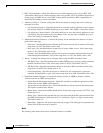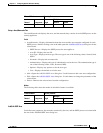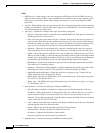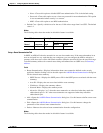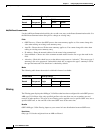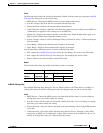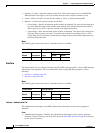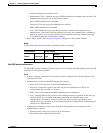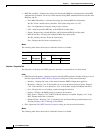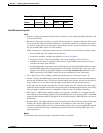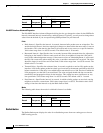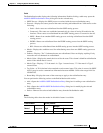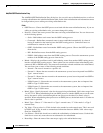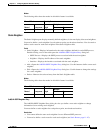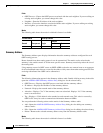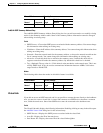
11-12
Cisco ASDM User Guide
OL-16647-01
Chapter 11 Configuring Dynamic And Static Routing
Dynamic Routing
• MD5 IDs and Keys—Contains the settings for entering the MD5 keys and parameters when MD5
authentication is enabled. All devices on the interface using OSPF authentication must use the same
MD5 key and ID.
–
Enter MD5 ID and Key—Contains the settings for entering MD5 key information.
Key ID—Enter a numerical key identifier. Valid values range from 1 to 255.
Key—An alphanumeric character string of up to 16 bytes.
–
Add—Adds the specified MD5 key to the MD5 ID and Key table.
–
Delete—Removes the selected MD5 key and ID from the MD5 ID and Key table.
–
MD5 ID and Key—Displays the configured MD5 keys and key IDs.
Key ID—Displays the key ID for the selected key.
Key—Displays the key for the selected key ID.
Modes
The following table shows the modes in which this feature is available:
Interface > Properties Tab
The Properties tab displays the OSPF properties defined for each interface in a table format.
Fields
• OSPF Interface Properties—Displays interface-specific OSPF properties. Double-clicking a row in
the table opens the Edit OSPF Interface Properties dialog box for the selected interface.
–
Interface—Displays the name of the interface that the OSPF configuration applies to.
–
Broadcast—Displays “No” if the interface is set to non-broadcast (point-to-point). Displays
“Yes” if the interface is set to broadcast. “Yes” is the default setting for Ethernet interfaces.
–
Cost—Displays the cost of sending a packet through the interface.
–
Priority—Displays the OSPF priority assigned to the interface.
–
MTU Ignore—Displays “No” if MTU mismatch detection is enabled. Displays “Yes” if the
MTU mismatch detection is disabled.
–
Database Filter—Displays “Yes” if outgoing LSAs are filtered during synchronization and
flooding. Displays “No” if filtering is not enabled.
• Edit—Opens the Edit OSPF Interface Properties dialog box for the selected interface.
Modes
The following table shows the modes in which this feature is available:
Firewall Mode Security Context
Routed Transparent Single
Multiple
Context System
• — • ——



